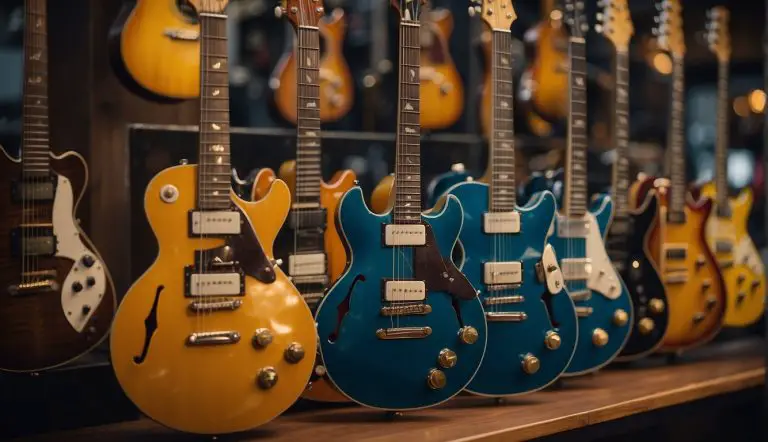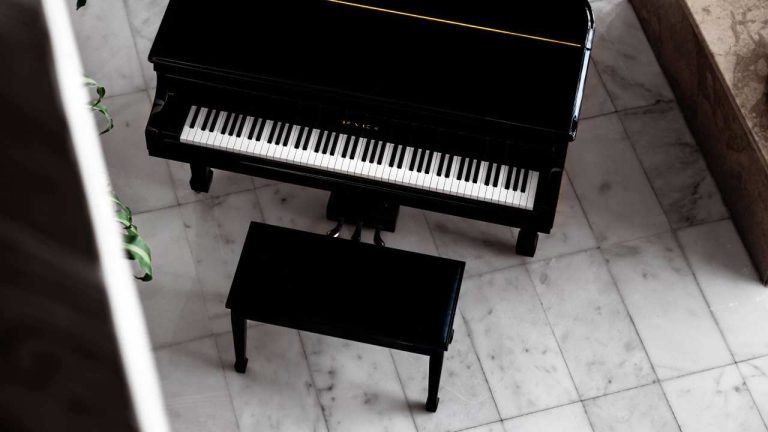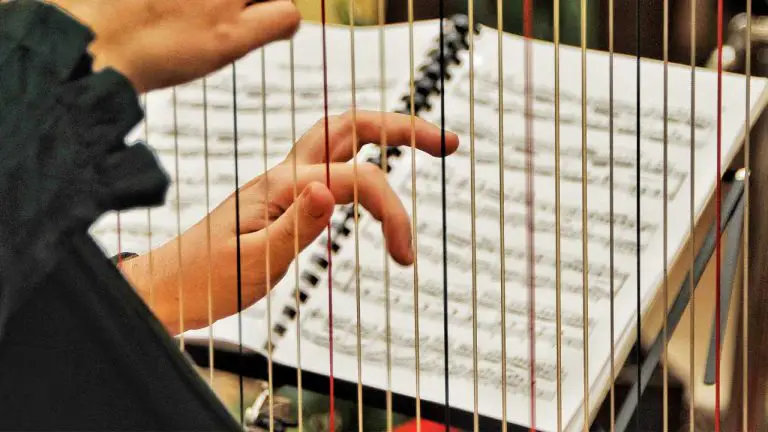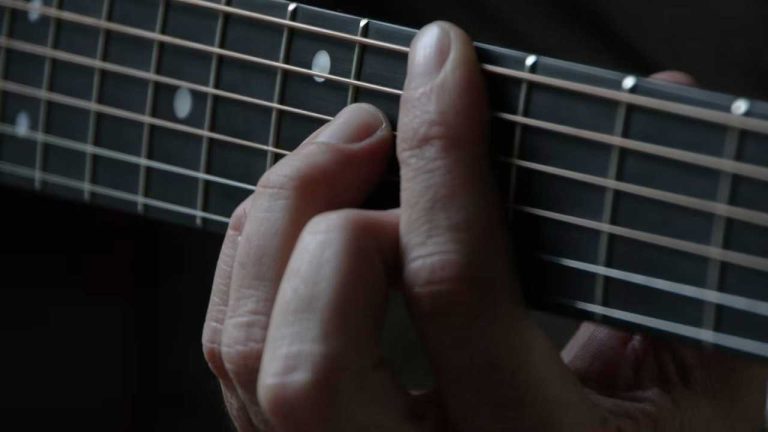Harp Music Books for Beginners: Our Top 5 Picks to Kickstart Your Journey
Folkstrings.com is reader-supported. When you buy through links on our site, we may earn a small commission.
Harp music has a rich history and holds a unique place in the world of music. As an instrument, the harp has charmed and fascinated countless people due to its elegant design and ethereal sound. For beginners looking to learn this enchanting instrument, choosing the right harp music book is essential to their musical journey.
Although there are various types of harps, most beginners start with a smaller, lever harp before progressing to the larger, more complex pedal harp. Harp music books for beginners typically focus on providing easy-to-follow sheet music, instructions, and guidance to help novices understand the basics of harp playing and enable them to gradually learn more intricate techniques.
When choosing a harp music book for beginners, it is essential to pay attention to the content’s suitability for the reader’s skill level, the book’s progression pacing, and the quality of instructional material. A good beginner harp book should cater to the specific needs of a novice harpist and offer a high-quality educational experience.
With so many harp music books available, finding the perfect one can be daunting. To help make your search easier, we’ve invested time in researching and evaluating a variety of beginner harp books to identify those that best suit the needs of novice harpists and offer an enjoyable learning experience.
Our Top Harp Music Books for Beginners
We’ve put together a list of our favourite harp music books for beginners, hand-picked to help you get started on your musical journey.
1. Easy Harp Hymns of Lasting Faith

We believe this book is an excellent choice for advancing beginners seeking to practice and improve their harp skills with familiar hymns.
Pros
- Ideal for advancing beginners
- Features familiar hymn melodies
- Encourages good performance habits
Cons
- May require some adaptation for smaller harps
- Not suitable for complete beginners
This book is an excellent resource for improving tone and practising good performance habits. The familiar hymn melodies will make it enjoyable to work through the 38 pages, and we felt that it was ideal for the advancing harp beginner who is already comfortable with basic harp techniques.
If you have a smaller harp or a lyre, you might need to adjust some of the double notes to single notes to accommodate your instrument. It’s also worth noting that this book may not be suitable for complete beginners just starting out with the harp, as it assumes a certain level of prior knowledge and experience.
We like that the book is part of the Good Old Tunes Harp Music series, which ensures consistent quality across the range. If you’re an advancing beginner looking to deepen your harp skills with hymns we believe this book is worth considering.
2. First 50 Songs You Should Play on Harp

We highly recommend this book for beginners looking to learn diverse and engaging harp songs.
Pros
- Wide variety of music styles
- Suitable for beginners
- Helps with sight reading and confidence
Cons
- Some arrangements will be challenging, but can be overcome.
- Requires a basic understanding of sheet music.
As we went through the “First 50 Songs You Should Play on Harp” book, we found it to be an excellent resource for harp beginners looking to expand their repertoire. The book contains a diverse selection of songs that cater to various musical tastes, giving new harpists a well-rounded introduction to the world of harp music.
Although some of the arrangements in the book can be a bit challenging, we discovered that with a little patience and dedication, even those new to the instrument can learn and perform them with ease. The songs in this book will not only help improve your technique but also encourage sight reading and boost your confidence as you progress through the pieces.
The only drawback we experienced with this book was the lack of string and finger notations, which might make it tricky for absolute beginners. However, if you have a basic understanding of reading sheet music, this shouldn’t be a significant impediment. Overall, we believe that the “First 50 Songs You Should Play on Harp” is a valuable addition to any beginner harpist’s library, and we’ve thoroughly enjoyed playing through the engaging and beautiful arrangements it provides.
3. Beginners’ Harp & Lyre Christmas Collection
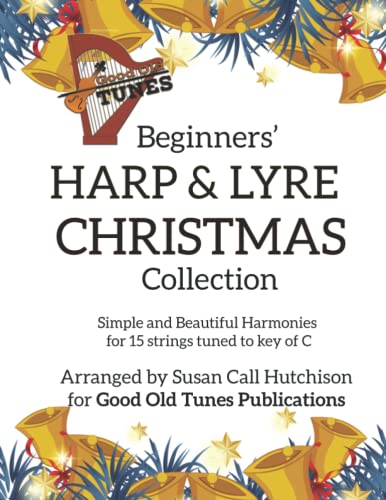
We highly recommend this book for beginners looking to dive into the world of harp music with engaging and beautiful harmonies.
Pros
- Appealing harmonies for beginners
- Wide variety of songs
- Easy-to-follow arrangements
Cons
- Only 45 pages in length
- Specific to Christmas music
- Designed for 15-string harps tuned to C
We recently had the pleasure of playing through the “Beginners’ Harp & Lyre Christmas Collection” and we can confidently say it’s a delightful addition to any aspiring harpist’s library. The simple harmonies featured in this book are enjoyable to play but also great for beginners who want a challenge to push them further.
This collection offers a fantastic variety of songs, so everyone will find something they enjoy. Although it’s specifically tailored to Christmas music, the arrangements are easy to follow and provide an engaging learning experience. The book is part of the “Good Old Tunes Harp Music” series, meaning there’s always more to explore when you’re ready to advance your skills.
One thing we want to note is that the book is designed for 15-string harps tuned to the key of C. If you have a different type of harp, you might need to make adjustments in order to play the songs. Apart from that, the book’s page count is on the shorter side, so the more experienced players might find it limiting. Nonetheless, it’s still an excellent resource for those starting their journey with the harp and looking for enjoyable practice material.
4. Basic Harp for Beginners
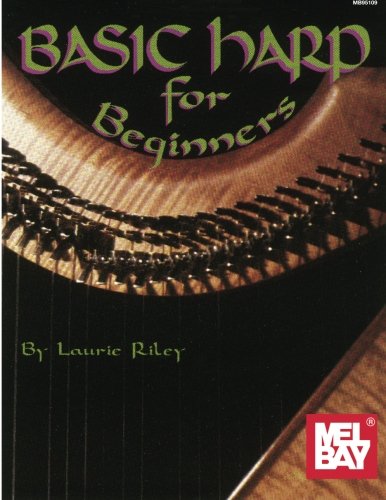
We recommend this book for beginners and self-learners looking for a good starting point in learning to play the harp but keep in mind it’s more of a reference guide.
Pros
- Ideal for self-learners.
- A respectful approach for beginners to really get grounded.
- Comprehensively covers hand positions, finger placement, and music reading
Cons
- May not be suitable for very small harps
- Some dated content and poor photo quality
- Emphatic directives may not work for everyone
We’ve found the “Basic Harp for Beginners” to be a helpful reference guide for anyone starting their harp learning journey. The book treats beginners with respect and provides valuable information on hand positions, finger placement, and music reading.
However, there are a few shortcomings with this book. Its content feels somewhat dated and the photographs are of poor quality, resembling photocopies rather than clear and useful images. Additionally, the book seems to be geared more toward younger learners, as it includes emphatic directives that might not resonate with adult beginners.
While we enjoyed working with this book and found it beneficial, it might not be ideal for you if you have a very small harp, as the book doesn’t consider smaller harps in its instructions. Overall, we think “Basic Harp for Beginners” is a good starting point, but you may want to supplement it with other resources or materials for a more comprehensive learning experience.
5. Conditioning Exercises for Beginners and Advanced Harpists: Harp Method
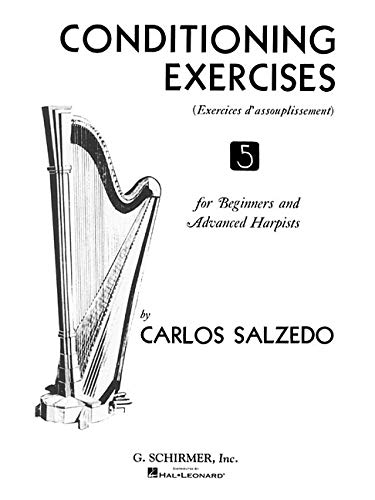
We highly recommend this conditioning exercise book for beginner to advanced harp players who want to improve finger strength, coordination, and techniques.
Pros
- Very effective finger workouts
- Improves finger positioning
- Suitable for various skill levels
Cons
- Requires prior knowledge of reading music notation
Upon practising with the Conditioning Exercises for Beginners and Advanced Harpists, many report noticing a significant improvement in finger strength and positioning. One reviewer claimed, “It truly delivered an intense, yet effective workout for our fingers, which led to noticeable progress in our playing technique.”
While the exercises in this book can benefit players across various skill levels, it’s important to note that it isn’t meant to be a comprehensive beginner’s guide. It’s essential for users to have some prior knowledge of reading music notation. That said, beginners can still benefit by practising these exercises at a slower tempo.
The book itself, being quite compact, can be easily carried to practices or gigs. We appreciated the simplicity and efficiency of these powerful conditioning exercises. It may be small, but it’s packed with value that every harpist can gain from incorporating it into their routine.
Buying Guide – Things To Help You Choose the Right Book
Finding the right harp music book for beginners can be a daunting task, but by using this buying guide, we hope to help you navigate through the process and make a more informed choice. Let’s explore a few factors to consider when searching for the perfect harp music book.
Level of Difficulty
First and foremost, it’s essential to choose a book that caters to a beginner’s level. We want to ensure the book introduces fundamental concepts and techniques in an easy-to-follow format, gradually increasing in difficulty. It’s important to find a good balance between being challenged and feeling overwhelmed.
Teaching Style
Everyone learns differently, so it’s important to find a harp music book that offers a teaching style aligned with your preferred method of learning. Some books may use visual aids, like diagrams and charts, while others may rely more on written explanations. If you’re more of a visual learner, and many people are, we would recommend finding a good for the harp.
Content Variety
You should also consider the variety of content within the book you choose. It’s more enjoyable to practice with a good mix of exercises and songs, encompassing various techniques and styles. A diverse selection will help us broaden our skills and keep us engaged in our practice sessions.
Progression Tracking
A beginner’s harp music book should have a clear progression structure so that we can measure our improvement. The book should ideally be organized into sections or chapters, each focusing on building specific skills or tackling new techniques. It’s really motivating to see our progress as we work through the material.
Quality and Design
Finally, it’s essential to consider the overall quality and design of the book. Clear notation, well-formatted text, and a sturdy binding are some features that make a harp music book more enjoyable to use. Taking the time to find a high-quality book will make our learning experience more pleasant and rewarding.
Author Profile
-
Daniel Johnstone is an English writer with a love for stringed instruments from around the world.
He shares his love for these instruments through his writing for folkstrings.com, a website dedicated to all things related to folk string music.
Daniel's passion for music started at a young age, and he has since become an accomplished musician, playing guitar, cavaco, and recently, the harp.
His dedication to learning and sharing his knowledge of stringed instruments is evident in his insightful and engaging blog posts. Whether you're a seasoned musician or a beginner, Daniel's writing is sure to inspire and entertain you.
When he's not playing music or writing, you can find Daniel exploring new instruments and seeking out new sounds to share with his readers.
Latest entries
 AutoharpApril 4, 2024What Is the Autoharp Made Of: Exploring Its Materials and Craftsmanship
AutoharpApril 4, 2024What Is the Autoharp Made Of: Exploring Its Materials and Craftsmanship AutoharpApril 4, 2024Is Autoharp Easy to Play? Unveiling the Truth for Beginners
AutoharpApril 4, 2024Is Autoharp Easy to Play? Unveiling the Truth for Beginners AutoharpApril 4, 2024What Is an Autoharp Worth? Your Guide to Pricing and Value
AutoharpApril 4, 2024What Is an Autoharp Worth? Your Guide to Pricing and Value AutoharpApril 4, 2024Are Autoharp and Zither the Same Thing? Unraveling String Instrument Myths
AutoharpApril 4, 2024Are Autoharp and Zither the Same Thing? Unraveling String Instrument Myths
Affiliates:
This post may contain affiliate links that at no additional cost to you, the site may earn a small commission. We only recommend products we would use ourselves and all opinions expressed on this site are our own.
Accuracy Advice:
While we strive to provide up-to-date and accurate information, the content in this article may not reflect the most current research or medical guidelines. We encourage readers to do further research and consult with professionals for more personalized advice.
Our Recommendations:
The products and services mentioned in any of our articles are recommended based on our independent research and personal experience. We are not sponsored by any company. We aim to suggest products and services we believe are of high quality and could be beneficial to our readers.


